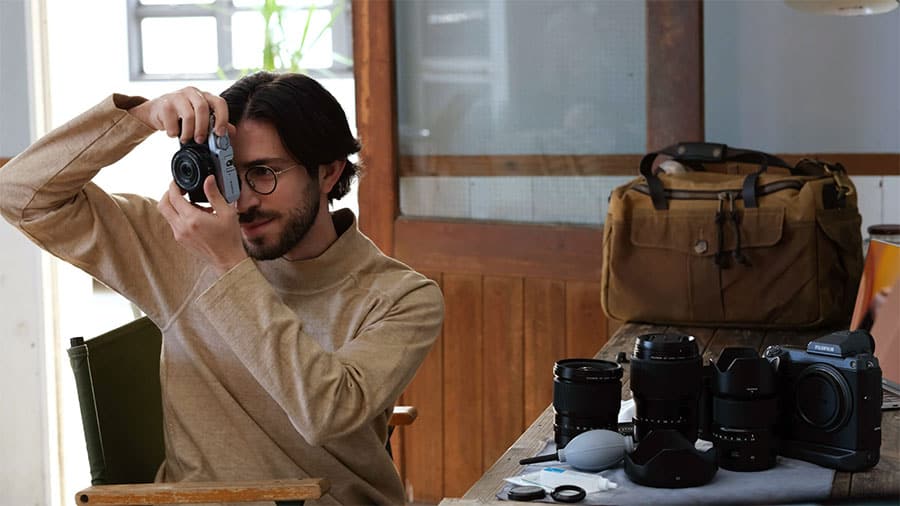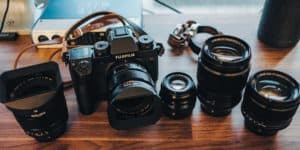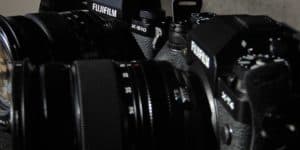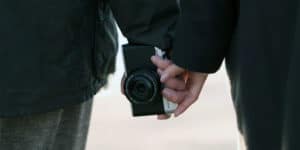Much more of the question comes down to the experience of owning and operating it.
This isn’t much different than it was back in the days of 35 mm film cameras.
The cameras all did more or less the same thing–and that’s the point at which we find ourselves now.
But using two cameras could be very different experiences, and so photographers tend to fall passionately in love with the one that best suits their style.
Is one camera better than the other? There are certainly some examples where a specific model shines for one reason or another.
But more often than not, the best camera is the one that you enjoy using the most and the one you use the most.
Here’s a look at some reasons a still photographer might prefer to shoot with a Fujifilm body.
I’m ignoring technical specifications here, so you’ll want to research each camera model thoroughly.
Instead, I’m choosing to focus on issues that are bigger than so-and-so many megapixels or this many photos in burst mode.
User Experience

One of the best ways to get to know a camera is by holding it in your hand. Just picking it up in an old-fashioned camera shop tells you a lot.
It tells you how it feels in your hand and how it’s weighted with the lens you want to mount. It also tells you if it’s bigger or smaller than you imagined it.
User experience goes further in the digital age. We’ve become accustomed to highly automated and computerized cameras.
Fujifilm bodies take a definite step back from this approach. When was the last time you saw an actual shutter speed dial on the top of a camera or a clicking aperture ring at the base of the lens?
These things almost went the way of the dinosaurs, but like the crazy guy who thought starting Jurassic Park was a good idea, Fuji dared to bring them back.
Making Film Color Profiles a Thing, Again

If you do some reading of avid Fujifilm fans, you might be shocked to hear them discuss the color filter modes again and again.
It’s contrary to so many things that have been ingrained in digital photographers for so long.
You must shoot in RAW, right? You must important and edit on the computer, right?
Gimmicky filters are just for kids on Instagram, right?
Well, maybe not. Like with their dials and retro designs, Fuji is trying hard to put the fun back into photography.
And that means cutting down on the work and increasing the enjoyment, which means less post-production. With a 26 megapixel sensor, there’s very little reason to worry about saving directly to JPG.
And before you write off these color profiles as grown-up Instagramming, take a look at how they’re organized.
Fuji has taken their beloved film brands and applied their color science to the digital world. Classic Chrome, Eterna, Provia, or Velvia–take your pick for the best results for your shoot. There are 19 choices to choose from.
If you’re hesitant to experiment with one-and-done JPG files, you can still shoot in RAW.
The Fujifilm X RAW Studio program will allow you to apply these film simulations to Fuji RAW files on your computer.
Better APS-C Lenses
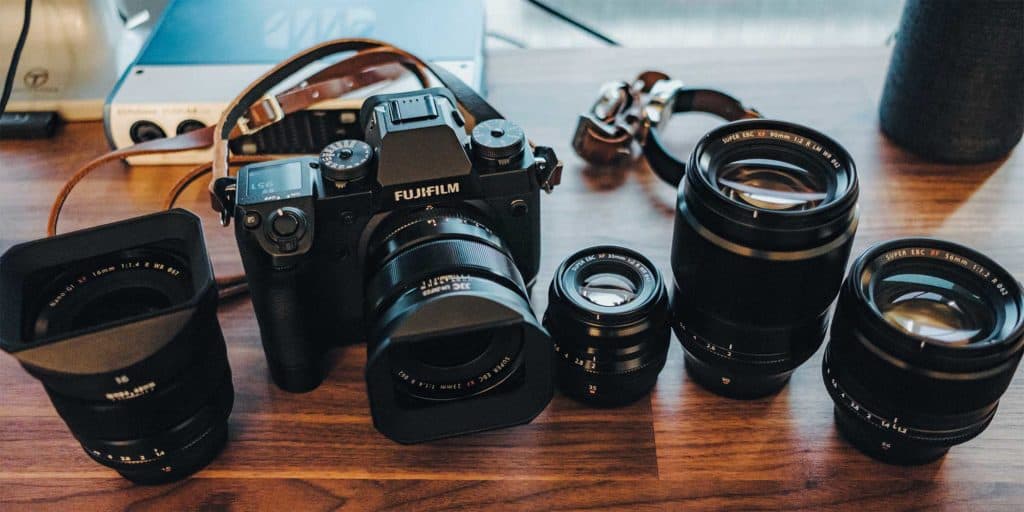
If you’re comparing Fuji’s offerings to Sony’s, there are a few key differences you need to be aware of. When Sony created their E-mount lenses, they made them work for both APS-C and full-frame camera bodies.
There are pluses and minus to this approach, but they wound up branding their full-frame cameras as the go-to premium, professional, or prosumer option.
So they have had little motivation to offer high-end APS-C sized lenses. The few APS-C mount lenses that Sony does offer aren’t that great.
To get really great glass from Sony, you need to step up to the G and GM lens line.
Nearly all of these lenses are built for full-frame cameras, which will work fine on an APS-C sensor. But it also means that they’re far larger and more expensive than they need to be.
Fuji, on the other hand, has designed the X-mount to be a high-quality APS-C option. This means that you can get outstanding optics that are designed for the sensor.
Take, for example, the Fujinon 56 mm f/1.2 portrait lens. Sony’s portrait lens is 85 mm f/1.4, perfect for a full-frame but too much focal length for an APS-C crop factor.
A Case for APS-C Over Full-Frame
There once was a time when the image quality gurus would tell you that you must have a full-frame camera to get the best images. But since that time, technology has come a long way.
Many photographers report overall better image quality, better dynamic range, and sharper images with their Fujifilm APS-C sensors than their Sony full-frames ever offered.
Most photographers do not miss the light-catching abilities or slightly better depth of field of their full-frame cameras for one simple reason.
If it’s even close, why carry around bigger gear? Full-frame lenses are a lot heavier than their APS-C counterparts, especially when you start comparing fast glass.
The bodies are bigger, too. If the image quality is a draw, why bother lugging it all around?
Buy It, And It Will Get Better
Pretty much everything we buy now needs to be updated from time to time. Phones, computers, and digital cameras are just a few examples. Updating is usually straightforward, and it usually means a simple internet download.
But when you look at the products you use, you can start to see how companies treat their customers by updating the software and firmware in their products.
Some companies–I’m looking at you, Sony–are updated only when necessary to address hardware compatibility or other issues.
But other companies push out new features to their old products. Yes, that means you don’t have to buy a new camera to get the new features.
How good does it feel to have that sort of support from a company? Thank you, Fujifilm.
Conclusion
Overall, Fuji’s approach to their cameras has been to make taking pictures fun again.
The Sony cameras take beautiful images, but using them often feels like programming a computer. Where’s the fun in that?

